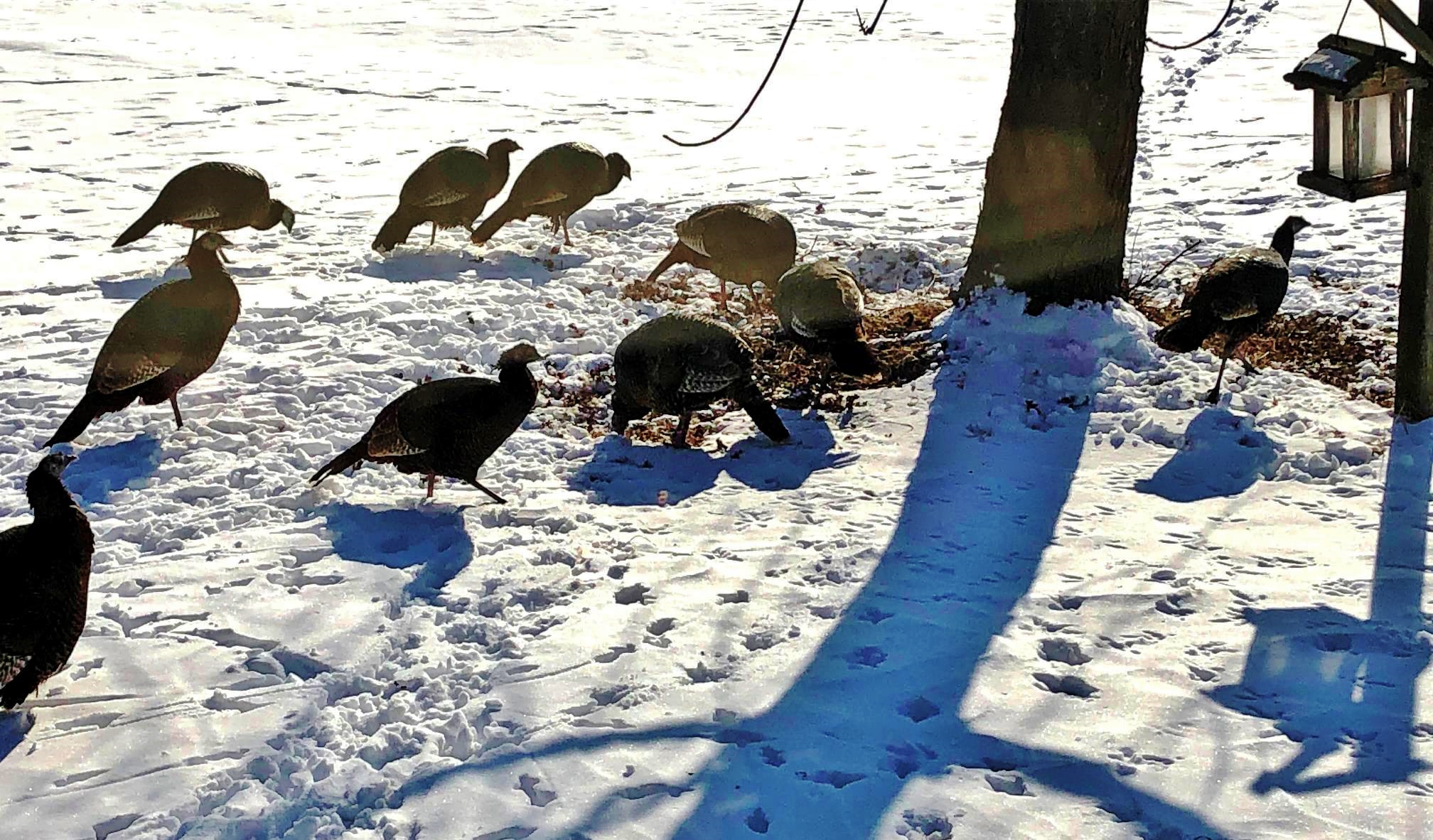Back Home by Chris Hardie
» Download this column as a Word document
» Download the photos that accompany this story
» Chris Hardie’s headshot
Living in the country means glimpses of wildlife are an everyday occurrence, but I never grow tired of observing.
Still, it’s not often I have an up-close-and-personal view of animals that usually flee when they notice me. Lately, we’ve had a flock of wild turkeys hanging around our yard and next door at my mother’s house.
The recent cold snap was not only difficult for people but also for animals. It’s not so much the bitter temperatures that challenge the turkeys. It’s the deep snow cover that makes it difficult for turkeys foraging for food.

Apparently, the turkeys figured what I’ve always known; when we’re hungry we can go to Mom’s. We’ve counted more than 40 turkeys in the flock, which has been busy scratching and digging up parts of Mom’s lawn.
Turkeys in the winter can often be seen in cornfields or scratching through manure. They’ll eat whatever they can find — including waste grain, weed seeds and bits of vegetation. Of course, they’ll peck at any grain below a bird feeder. But don’t think about feeding them. The Wisconsin Department of Natural Resources states a 15-pound turkey will eat 5 pounds of food per week. That’s a lot of scratch.
Turkeys prepare for lean winters by building fat during the spring, summer and fall. They can lose as much as 40 percent of their body weight before starvation becomes a concern. To show my concern for the turkeys, I’m offering them moral support by adding body weight during the winter.
They are really tough birds. The winter-survival rate varies by the severity of the winter; during mild winters the percent is 70 to almost 100, but it can decrease to 55 percent to 60 percent during bad years. Losing half seems like a lot, but the remainder is enough to provide breeding stock for the next season.
Turkeys roost in trees overnight, and if the weather is really bad they don’t leave their spots. Talk about nature’s couch potato; turkeys have been known to stay in their roosting trees for as long as two weeks if the weather is exceptionally bad. No food, clinging to branches in subzero temperatures, and no streaming services — that’s survival. I suppose they send the younger birds after the remote control if it’s dropped.
Speaking of cold weather, I did have one casualty on the farm. Our heated waterer in the animal barn froze. It survived the -40 polar plunge two years ago, but our recent days of -20 apparently did it in.
Longtime readers of my column might recall my challenges a few years ago with trying to keep a couple-dozen cows watered when winter came early. The solution eventually resulted in many trips up and down the hill carrying 5-gallon buckets because even the hose would freeze solid.
When we built the shed we had the foresight — I say we but it was more likely my wife, Sherry — to put in a hydrant close by. Because we only have a few animals, the problem is solved with a few trips from the hydrant, pouring the bucket into a 15-gallon rubber container only a few feet away.
It’s still a hassle but trying to thaw a waterer in the middle of the winter is not my idea of fun. A little more manual labor for the rest of the winter is hardly a new challenge. But I’m keeping my frozen fingers crossed the hydrant doesn’t freeze. The next-closest hydrant is several-hundred yards away.
Chris Hardie spent more than 30 years as a reporter, editor



